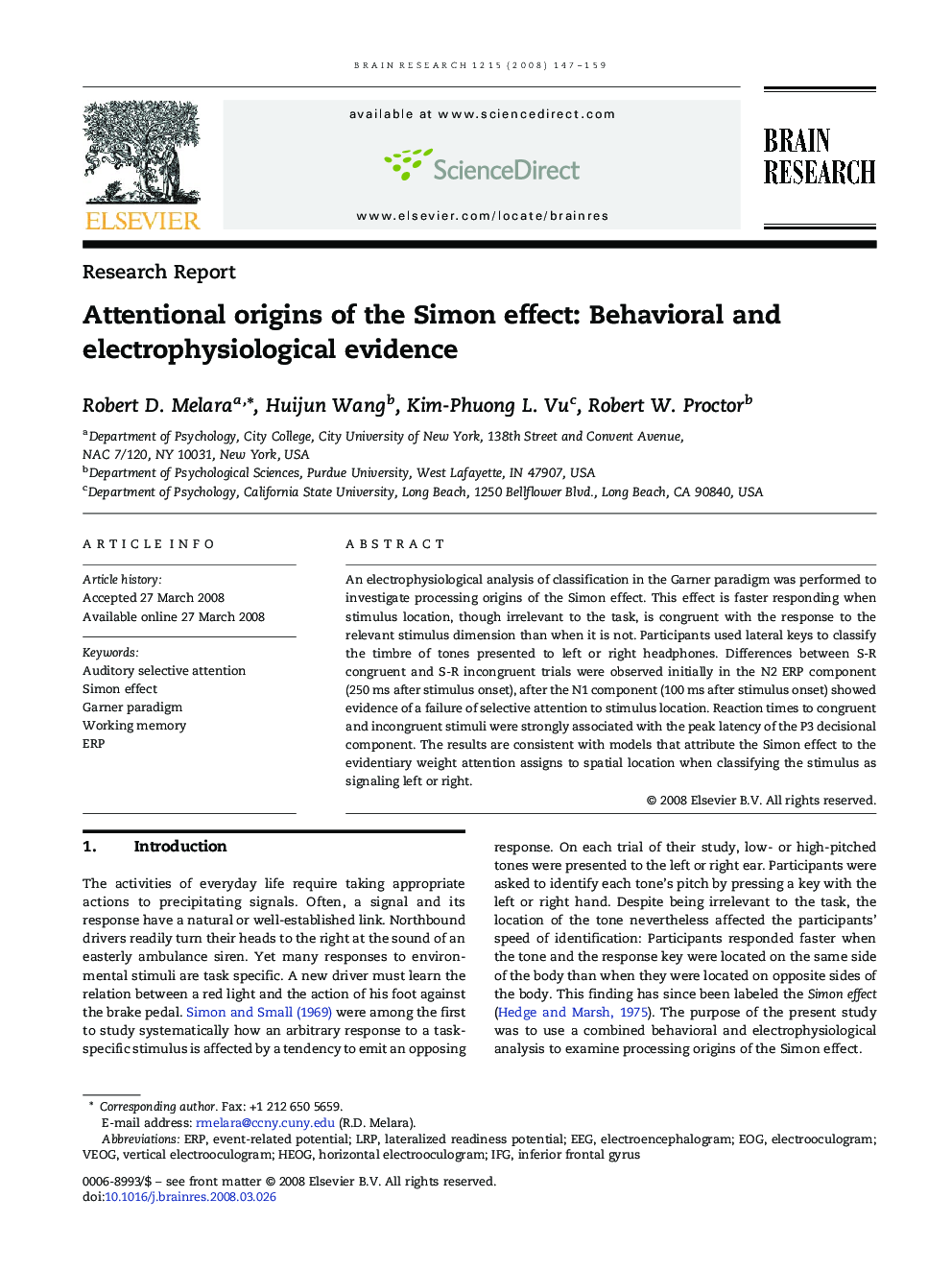| Article ID | Journal | Published Year | Pages | File Type |
|---|---|---|---|---|
| 6265788 | Brain Research | 2008 | 13 Pages |
An electrophysiological analysis of classification in the Garner paradigm was performed to investigate processing origins of the Simon effect. This effect is faster responding when stimulus location, though irrelevant to the task, is congruent with the response to the relevant stimulus dimension than when it is not. Participants used lateral keys to classify the timbre of tones presented to left or right headphones. Differences between S-R congruent and S-R incongruent trials were observed initially in the N2 ERP component (250Â ms after stimulus onset), after the N1 component (100Â ms after stimulus onset) showed evidence of a failure of selective attention to stimulus location. Reaction times to congruent and incongruent stimuli were strongly associated with the peak latency of the P3 decisional component. The results are consistent with models that attribute the Simon effect to the evidentiary weight attention assigns to spatial location when classifying the stimulus as signaling left or right.
